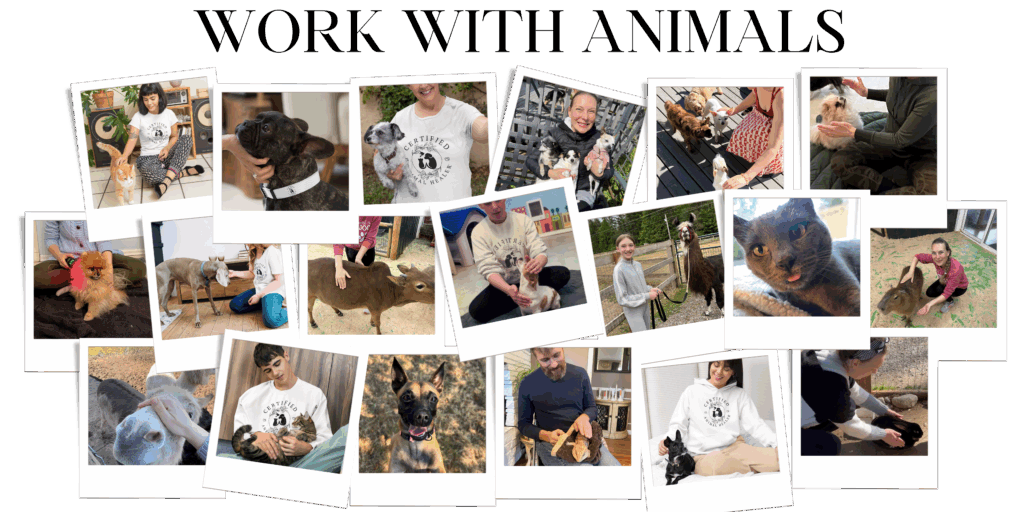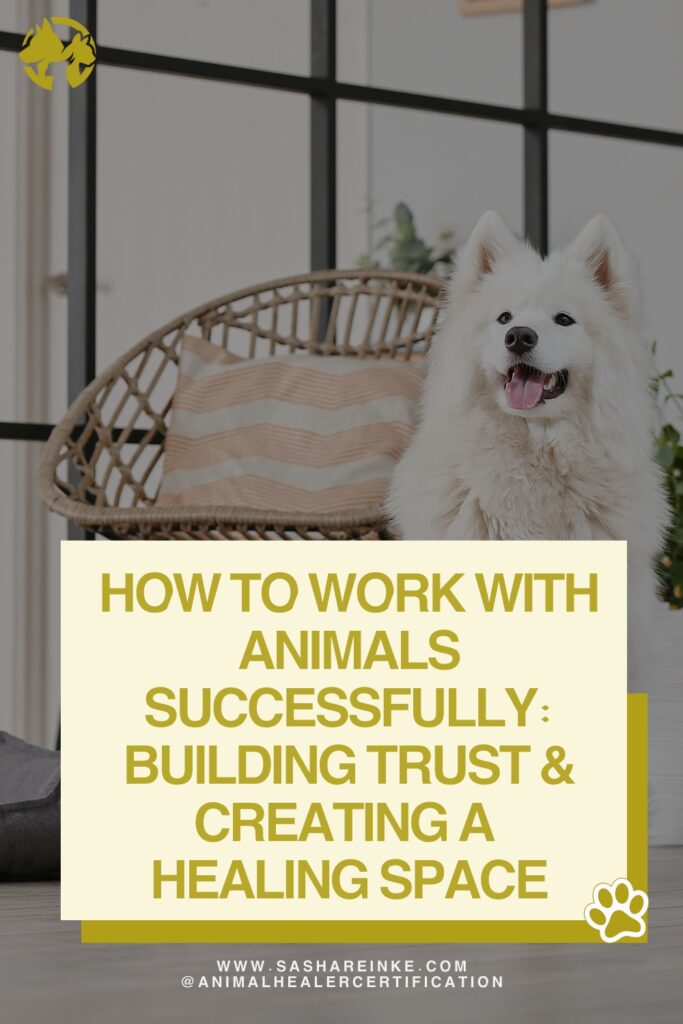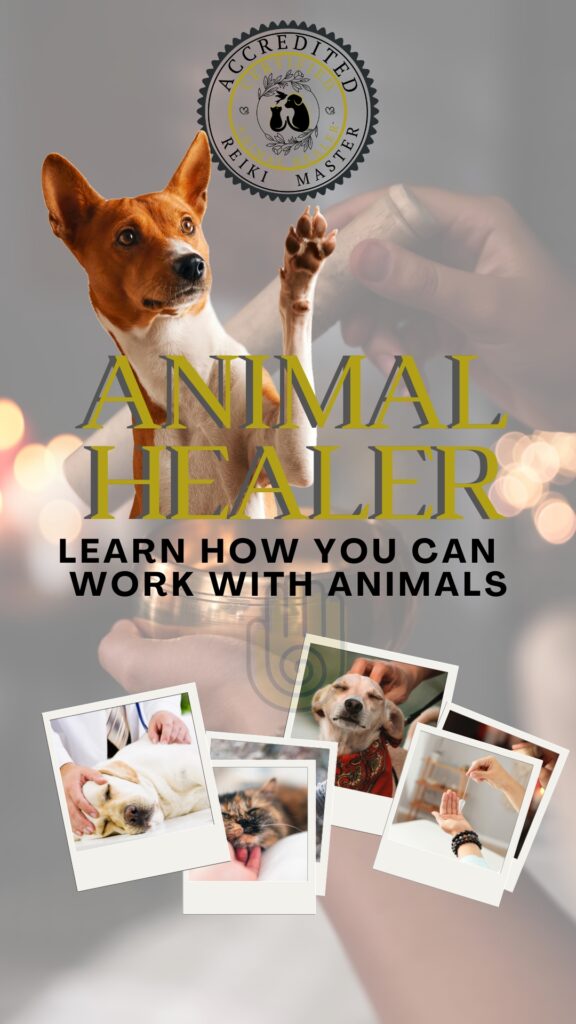Working with animals is one of the most rewarding experiences, whether you’re a pet owner, animal healer, trainer, or someone looking to start a career in holistic pet wellness. But as much as we love them, animals don’t communicate the way humans do—they rely on body language, energy, and trust to form connections.
If you want to work with animals successfully—whether for Reiki, Jin Shin Jyutsu, TTouch, or any healing modality—you must first learn how to earn their trust, read their energy, and create a safe, healing space. Without these foundational elements, an animal may resist your efforts, making healing or training less effective.
In this guide, we’ll cover how to:
✔ Understand an animal’s body language & energy
✔ Earn their trust in a gentle, respectful way
✔ Create a calm, healing environment that makes them feel safe
✔ Avoid common mistakes when working with animals
Let’s dive in! 🐾
Step 1: Understanding an Animal’s Body Language & Energy
Before you can successfully work with an animal, you must learn to read their cues. Animals communicate without words, so their energy, posture, and small movements will tell you everything you need to know about how they’re feeling.
Here’s a quick guide to recognizing common animal body language signals:
Relaxed & Open (Ready for Healing & Connection)
🐕 Dogs: Loose body, soft eyes, wagging tail (not too fast), gently approaching you
🐈 Cats: Slow blinking, relaxed whiskers, tail straight up with a curve at the tip
🐎 Horses: Lowered head, soft eyes, resting back leg, gentle chewing motion
✨ What this means: The animal is calm and comfortable and may be open to interaction or healing work.
Unsure or Cautious (Proceed Slowly & Respectfully)
🐕 Dogs: Stiff posture, tail low or slightly tucked, avoiding direct eye contact
🐈 Cats: Ears slightly back, tail twitching, slow movements away from you
🐎 Horses: Tense muscles, ears moving quickly back and forth, stepping away
✨ What this means: The animal is uncertain or skeptical. Give them space and let them approach on their terms.
Fearful or Defensive (Do NOT Force Interaction!)
🐕 Dogs: Growling, tail tucked tightly, lip curling, whites of eyes showing
🐈 Cats: Ears flat, puffed-up fur, hissing, tail lashing
🐎 Horses: Ears pinned back, tail swishing aggressively, kicking or backing up
✨ What this means: The animal feels threatened or overwhelmed. Back off and allow them to calm down before re-engaging.
🐾 The key to working with animals successfully is to meet them where they are, rather than forcing interaction.The more you respect their signals, the faster they will learn to trust you.
Step 2: Earning an Animal’s Trust
Trust is not automatic—it must be earned. Some animals will be naturally friendly, while others (especially rescues or those with past trauma) may take longer to warm up to you.
Here are some tips to build trust in a respectful, loving way:
1. Let the Animal Come to You
Instead of walking straight up to an animal, allow them to approach on their own terms. This gives them a sense of control and safety.
✔ Sit at their level or turn slightly sideways (a less intimidating posture).
✔ Extend your hand gently, but don’t push it toward them.
✔ Let them sniff you before attempting touch.
2. Use a Soft, Calm Voice
Animals respond best to gentle, soothing tones. Avoid:
❌ Speaking too loudly or too high-pitched
❌ Using fast, excited speech (this can make an anxious animal more nervous)
Instead, speak slowly and gently, using their name or calming words like, “You’re safe.”
3. Offer Treats or Positive Reinforcement
Using treats is an easy way to associate your presence with good things! If the animal is food-motivated, offer small treats when they engage with you.
✔ Use healthy, pet-safe treats
✔ Reward calm behavior (not fear-based reactions)
4. Avoid Direct Eye Contact at First
In the animal world, staring can be a sign of dominance or threat. Instead of locking eyes with a nervous animal, try:
✔ Soft blinking (this is a calming signal for cats)
✔ Looking at their nose or ears instead of directly at their eyes
5. Use Gentle, Respectful Touch
Once an animal allows you to physically connect, start with light, slow strokes on areas they are comfortable with. For example:
✔ Dogs & Cats: Chest, side of the neck, or under the chin
✔ Horses: Shoulder, withers, or forehead
🐾 Avoid touching the top of the head first, as this can feel dominant to many animals!
Step 3: Creating a Healing Space for Animals
Whether you’re working with an animal for Reiki, Jin Shin Jyutsu, or another healing practice, the environment matters. Animals are incredibly sensitive to energy and atmosphere, so creating a calm, safe space makes healing work more effective.
How to Set Up a Healing Space for Animals
🌿 Choose a Quiet Location – Find a space away from loud noises, bright lights, and distractions.
🕯 Set the Mood with Calming Scents & Sounds – Lavender and chamomile are great pet-safe essential oils (used in a diffuser). Soft music or nature sounds can also help animals relax.
🛏 Provide a Comfortable Spot – Use a soft blanket, pet bed, or mat where the animal can lay down comfortably.
💫 Ground Yourself Before the Session – Animals mirror our energy, so take a few deep breaths before starting. The calmer you are, the more relaxed they will be.
🐾 Want to learn hands-on healing techniques? My Awaken Your Inner Healer Mini-Course teaches step-by-step methods for energy healing, including Jin Shin Jyutsu, Reiki, and meridian massage for animals!
Step 4: Avoiding Common Mistakes When Working with Animals
🚫 Forcing Physical Contact Too Soon – Let the animal set the pace.
🚫 Ignoring Warning Signs – If an animal is stiff, tense, or showing avoidance, respect their space.
🚫 Being Too Excitable or Overwhelming – Stay calm and grounded—your energy influences theirs.
🚫 Skipping Energy Connection – Before touching an animal for healing, spend a moment just being present, letting them get used to your energy.
Want to Deepen Your Connection with Animals?
If you’re passionate about helping animals heal and want to learn professional energy healing techniques, my Awaken Your Inner Healer Mini-Course is the perfect place to start!
🌟 In this course, you’ll learn:
✔️ How to use Reiki, Jin Shin Jyutsu & meridian massage for animals
✔️ Techniques to calm anxious, stressed, or fearful pets
✔️ How to read animal energy and body language more intuitively
✔️ The first steps to starting your own holistic pet wellness business
🐾 Click here to enroll & start your journey in animal healing today! 🐕💖
Mastering the art of working with animals takes patience, respect, and deep connection—but once you earn an animal’s trust, the healing possibilities are endless! 🐾✨





